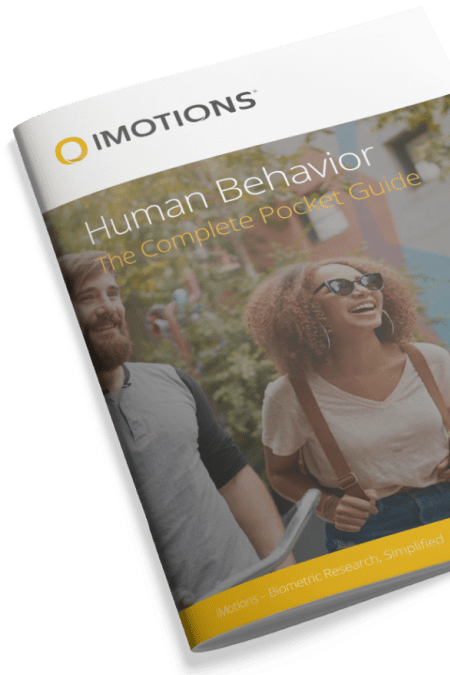Explore the science behind resilience and learn about measuring one’s capacity to rebound from adversity. Discover how resilience can be quantified and assessed effectively. Gain insights into the factors influencing one’s ability to bounce back from challenges in this informative article.
Table of Contents
When life pushes us down, some people stay down longer, while others seem to spring back to their feet almost immediately. This difference is not just a matter of willpower or optimism – it is resilience. For decades, resilience has been studied in psychology as one of the most important predictors of how we cope with stress, trauma, and everyday challenges.
Resilience is notoriously difficult to measure in an objective, reliable way, as respondents can only tell us what people think about their ability to endure setbacks. This renders self-report questionnaires biased at best, and unreliable in the worst case.
However, since resilience is as much about physiology and behavior as it is about belief, it opens the door to another more objective methodology, namely biosensor measurements. By synchronizing signals from the body and brain, researchers can now attempt to track physiological responses as resilience manifests in real time.
What Exactly is Resilience?
Resilience is often described as the ability to “bounce back” from adversity, or “powering through” challenges, but this shorthand hides a complex psychological process. Researchers today define resilience not as a fixed personality trait, but as a dynamic interaction between cognitive strategies, emotional regulation, and physiological recovery.

Some of the most influential theories of resilience include:
- Mindset Theory (Carol Dweck) – People who believe their abilities are malleable (growth mindset) persist longer and adapt better than those who view abilities as fixed. Resilience here is not about raw talent, but about how beliefs shape persistence.
- Hardiness Theory (Suzanne Kobasa) – Resilient individuals show high commitment, control, and challenge – they see obstacles not as threats, but as opportunities for growth.
- Broaden-and-Build Theory (Barbara Fredrickson) – Positive emotions broaden thought–action repertoires, making people more creative in the face of difficulty, which builds lasting resources for coping.
- Ordinary Magic (Ann Masten) – Masten describes it not as something rare or heroic, but as the product of “ordinary adaptive systems” like problem-solving, supportive relationships, and emotional regulation.
Together, these theories show resilience as both belief-driven (mindsets, outlooks) and biology-driven (physiological recovery and adaptation).
Why Questionnaires Aren’t Enough
Traditionally, resilience has been measured through scales such as the Connor-Davidson Resilience Scale (CD-RISC) or the Brief Resilience Scale (BRS). These questionnaires provide valuable insights into how people see themselves – but they cannot capture what happens in the heat of the moment.
When someone encounters a real setback, failing a test, being rejected in a job interview, or hitting an impossible task in a lab setting, resilience is expressed in heart rate changes, skin conductance, facial expressions, and behavioral persistence. These signals are automatic, often outside of conscious awareness.
This is where a multimodal approach offers something new.
Testing Resilience with Biosensors (and, of course, iMotions)
The iMotions Lab platform integrates multiple biosensors, all time-synchronized, to paint a detailed picture of how humans respond and adapt to stress, which infers a certain level of resilience. Researchers can simulate challenges in controlled or naturalistic settings and measure how quickly participants recover, re-engage, and continue.
Physiological Arousal and Recovery
- Electrodermal Activity (EDA/GSR): Measures activation of the sympathetic nervous system, indicating stress levels and recovery speed.
- Heart Rate Variability (HRV): A gold-standard biomarker of resilience. Higher HRV reflects greater flexibility in emotional regulation and stress adaptation.
Cognitive and Emotional Processing
- EEG (Electroencephalography): Tracks neural correlates of attention, frustration, and cognitive control. Resilient individuals often show quicker neural adaptation after errors.
- Facial Expression Analysis: Detects subtle emotional leakage such as frustration, determination, or relief, providing clues to coping strategies.
Behavioral Persistence
- Eye Tracking: Reveals whether people fixate on obstacles or redirect attention toward problem-solving cues.
- Performance Metrics: By embedding tasks in the study design, researchers can measure perseverance, dropout points, and adaptive strategies under stress.
Together, these modalities can help researchers create a holistic resilience profile that reflects not just what people report, but how they actually respond.
Putting Mindset Theory to the Test
Consider a study inspired by Mindset Theory.
Participants are presented with a challenging puzzle designed to become progressively harder until most fail. While they work, iMotions would collect:
- EDA & HRV → markers of stress and recovery.
- Facial expressions → indicators of frustration or determination.
- Eye tracking → attention patterns, e.g., whether they focus on problem elements or disengage.
- Behavioral metrics → how long they persist before giving up.

By comparing participants with a self-identified growth mindset vs. those with a fixed mindset, researchers can observe how beliefs translate into biophysiological resilience. Do growth-minded individuals really regulate stress better? Do they persist longer? The data reveal answers that self-report alone cannot.
Resilience in the Real World
Now the question is of course, why does this matter? It matters hugely, because this research is not just a purely academic pursuit. It has profound implications across crucial domains:
- Education: Understanding resilience can help teachers support students who struggle with failure, reframing mistakes as part of learning.
- Healthcare: Patients undergoing long treatments may benefit from resilience-based interventions to sustain adherence.
- Workplace Performance: Resilience training can reduce burnout and increase productivity, particularly in high-stress industries.
- Clinical Psychology: Early detection of low resilience markers could help identify individuals at risk of depression, anxiety, or PTSD.
Biometric measures offer a way to evaluate interventions, from mindfulness and breathing exercises to cognitive reappraisal, not only through subjective feedback but also by tracking immediate physiological improvements.
From Buzzword to Methodology
Resilience has often been treated as an inspirational concept, something we aspire to, but rarely measure with precision. Most of us will have seen coaches online hawking their courses on how to build a strong resilience mindset, and thereby succeeding at business and at life. With platforms like iMotions, term can be transformed from a vague buzzword into a scientifically quantifiable construct that actually matters.
By combining psychological theories with real-time data on stress, recovery, and persistence, researchers can build a nuanced understanding of how people cope with life’s inevitable challenges.
Resilience, in this sense, is not magic. It is measurable. And more importantly, it is something that can be trained, supported, and strengthened, for individuals, organizations, and societies alike.
Free 52-page Human Behavior Guide
For Beginners and Intermediates
- Get accessible and comprehensive walkthrough
- Valuable human behavior research insight
- Learn how to take your research to the next level












